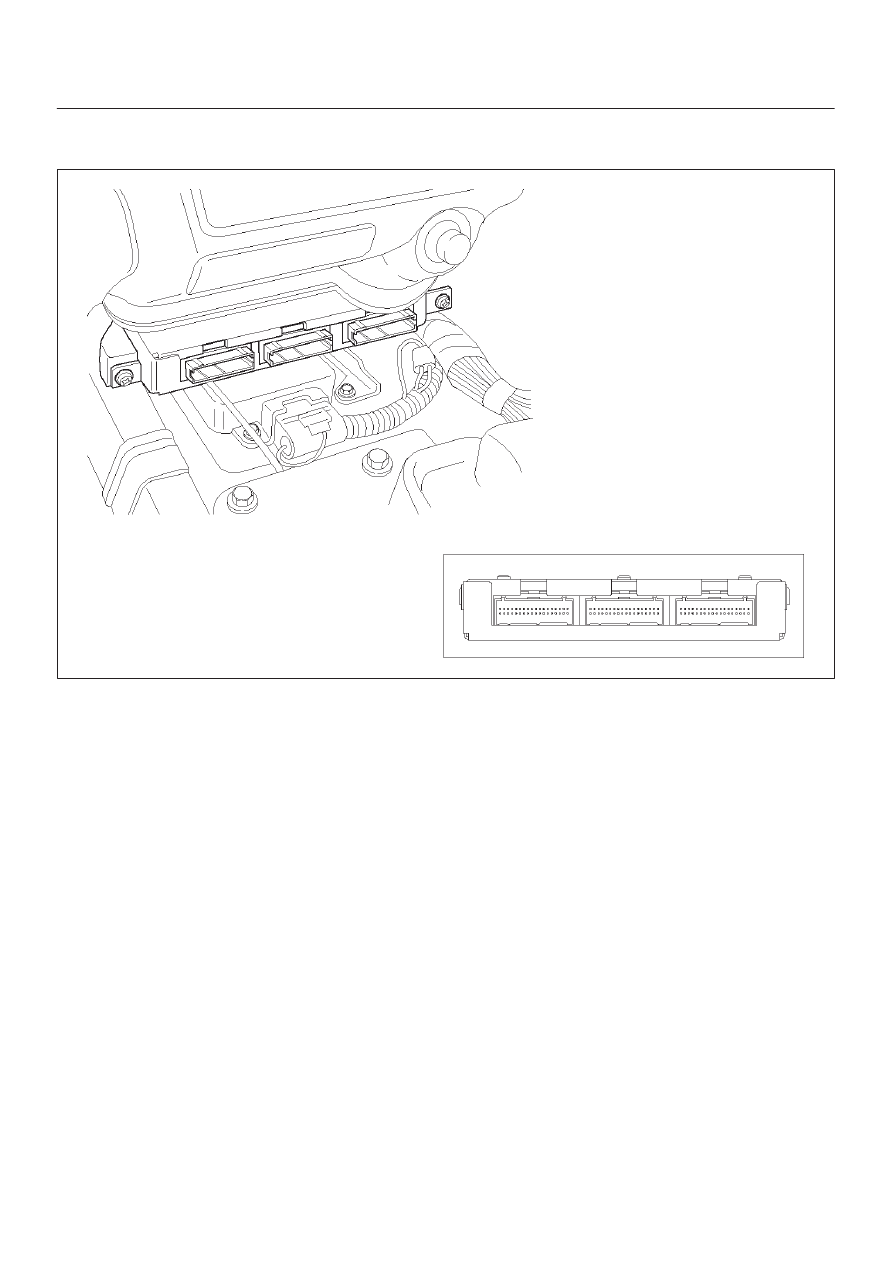Opel Frontera UBS. Manual - part 560

7A1–18 TRANSMISSION CONTROL SYSTEM (4L30–E)
OBD II Diagnostic Management System
Powertrain Control Module (PCM) Location
C07RW005
Class 2 Serial Data Bus
OBD II technology requires a much more sophisticated
PCM than does OBD I technology. The OBD II PCM
diagnostic management system not only monitors
systems and components that can impact emissions, but
they also run active tests on these systems and
components. The decision making functions of OBD II
PCMs have also greatly increased. To accommodate this
expansion in diagnostic complexity, Isuzu engineers have
designed the Class 2 serial data bus, which meets SAE
J1850 recommended practice for serial data.
“Serial Data” refers to information which is transferred in a
linear fashion – over a single line, one bit at a time. A “Data
Bus” is an electronic pathway through which serial data
travels.
TROOPER previously used a 5 volt data bus called
UART, which is an acronym for “Universal Asynchronous
Receive and Transmit”. When neither the vehicle’s
control module nor the diagnostic tool, such as a Tech2,
are “talking,” the voltage level of the bus at rest is 5 volts.
The two computers talk to each other at a rate of 8,192
bits per second, by toggling or switching the voltage on
the data bus from 5 volts to ground.
Class 2 data, which is used on OBD II vehicles, is quite
different. Data is transferred at a rate of 10.4 kilobits per
second, and the voltage is toggled between zero and 7
volts.